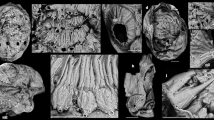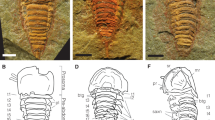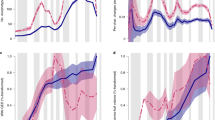Abstract
ONE of the many puzzling features of the Echinodermata is their pentameral symmetry. The theory put forward by Nichols1 goes far towards accounting for the origin of pentamerism. Taking as his starting point a young echinoderm with its aboral surface covered only by an anal plate and a surrounding ring of plates, Nichols reasons that a strong outer covering (test) would be best developed if there were as few plates as possible in the circum-anal ring, with short sutures between each plate. An even number of plates would have a long suture of weakness cutting across the resultant test. With three plates, the sutures would be at 120°, again a weak arrangement. With five plates of uniform size, however, the sutures are few and short and each suture is opposite a solid plate.
This is a preview of subscription content, access via your institution
Access options
Subscribe to this journal
Receive 51 print issues and online access
$199.00 per year
only $3.90 per issue
Buy this article
- Purchase on Springer Link
- Instant access to full article PDF
Prices may be subject to local taxes which are calculated during checkout
Similar content being viewed by others
References
Nichols, D., Echinoderms (Hutchinson, 1962).
Raup, D. M., J. Geol., 67 (b), 661 (1959).
Raup, D. M., J. Paleont., 34, 5, 1041 (1960).
Berry, L. G., and Mason, B., Mineralogy (Freeman, 1959).
Author information
Authors and Affiliations
Rights and permissions
About this article
Cite this article
COCKBAIN, A. Pentamerism in Echinoderms and the Calcite Skeleton. Nature 212, 740–741 (1966). https://doi.org/10.1038/212740a0
Issue Date:
DOI: https://doi.org/10.1038/212740a0
This article is cited by
-
Calcification in sea urchins
Calcified Tissue Research (1969)
-
Pentamerism and the Calcite Skeleton in Echinoderms
Nature (1967)
Comments
By submitting a comment you agree to abide by our Terms and Community Guidelines. If you find something abusive or that does not comply with our terms or guidelines please flag it as inappropriate.



